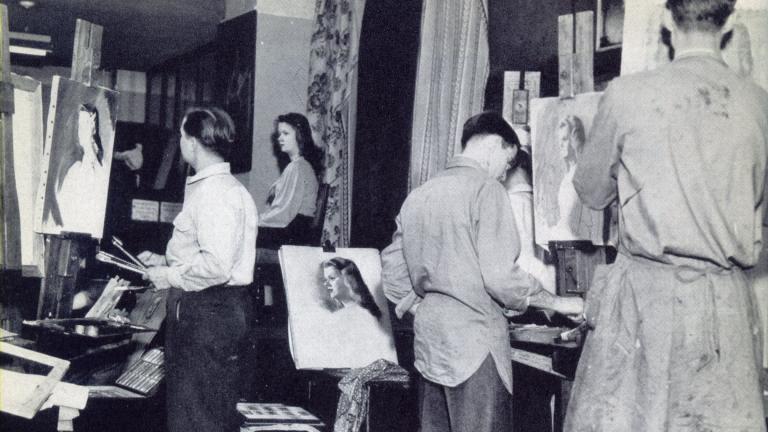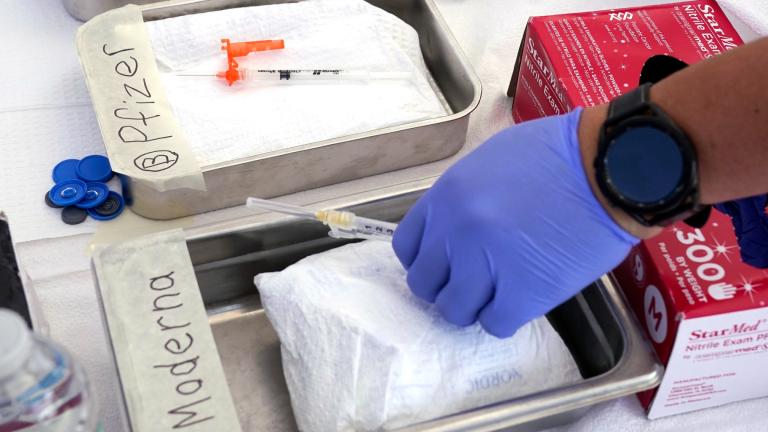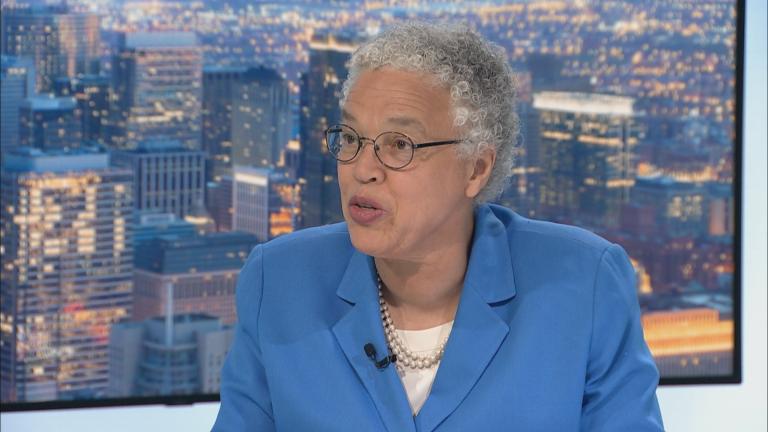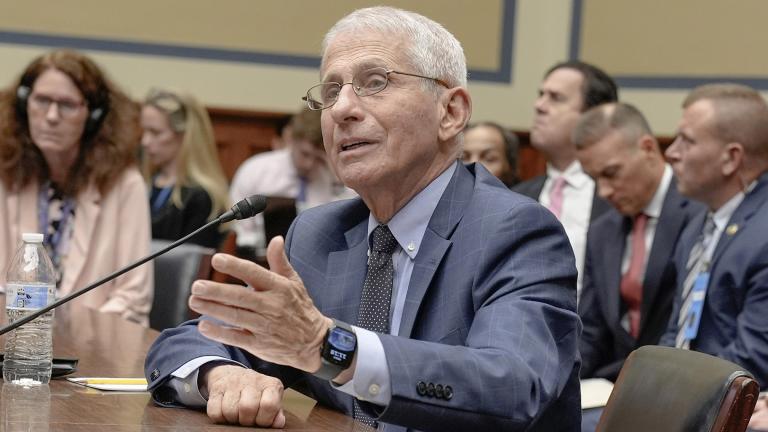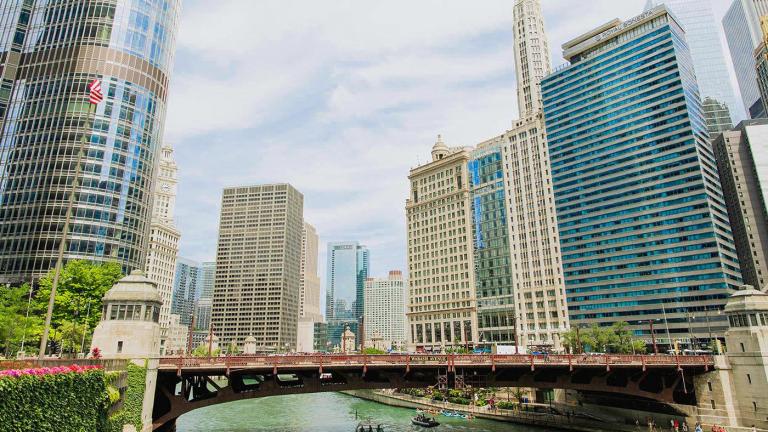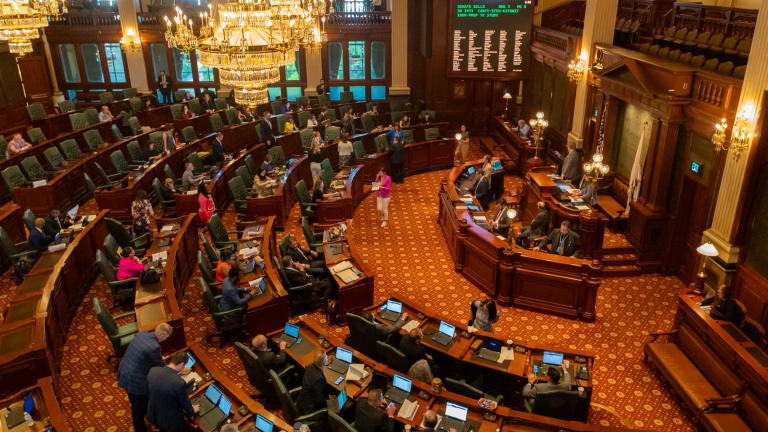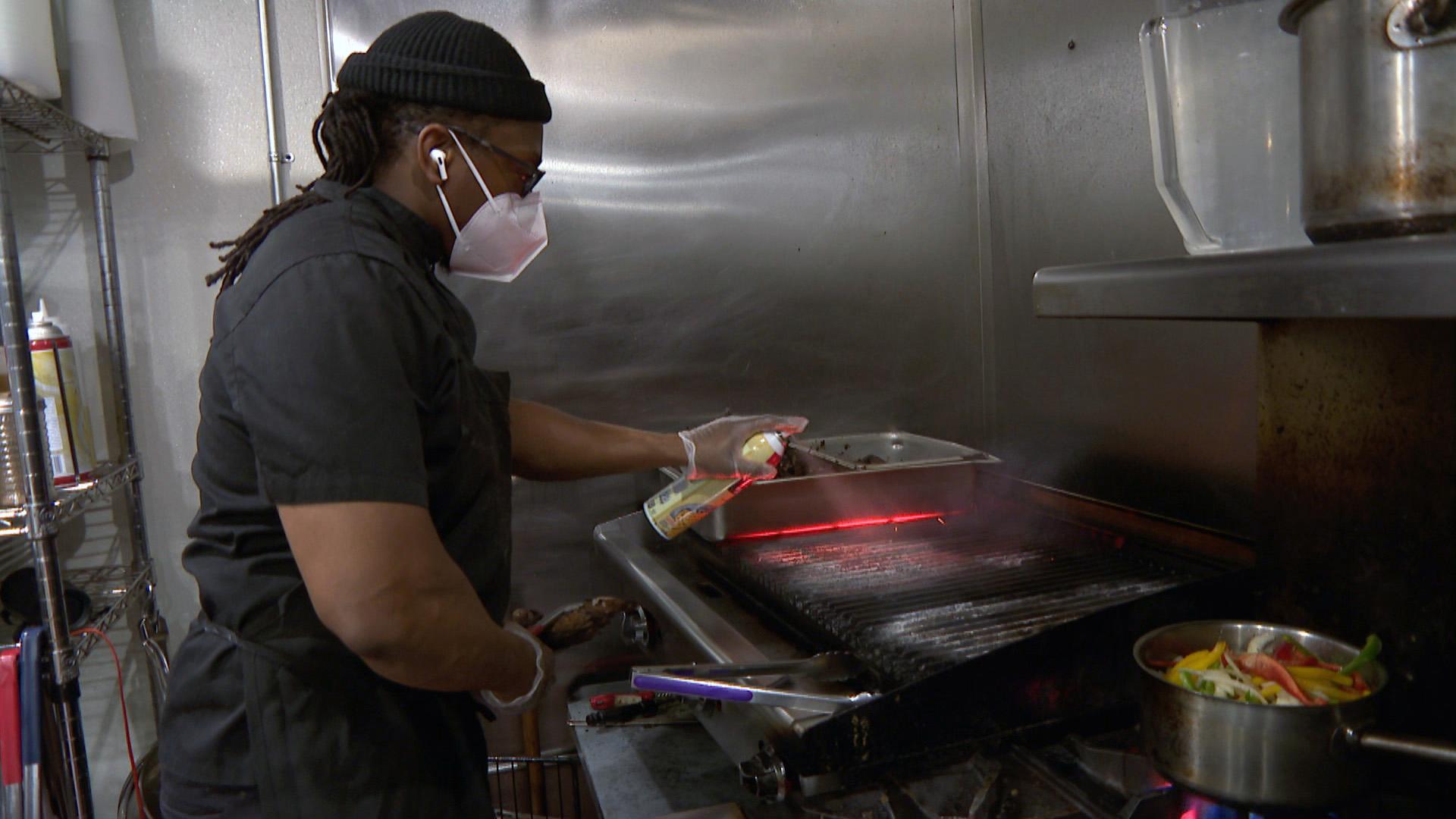 A restaurant worker in Chicago preps the grill. City officials on Tuesday said rules around indoor dining at bars and restaurants will be relaxed. (WTTW News)
A restaurant worker in Chicago preps the grill. City officials on Tuesday said rules around indoor dining at bars and restaurants will be relaxed. (WTTW News)
Chicago officials announced Tuesday they will allow indoor dining and drinking at bars and restaurants to operate at 40% of their normal capacity, or no more than 50 people.
Six days after officials announced they would slowly allow indoor dining and drinking at bars and restaurants to operate at an expanded capacity in an effort to avoid another surge of COVID-19 cases, Chicago met the first benchmark laid out in the plan.
“In recent days, we have made incredible progress in the ongoing effort to save lives and defeat this deadly virus,” Mayor Lori Lightfoot said. “I am thrilled that we have made enough headway to cautiously ease more regulations, but I once again want to remind all our businesses and residents that we are not out of the woods yet. Only by committing to what we know works will we be able to continue moving forward carefully and responsibly.”
Bars and restaurants had been allowed to seat no more than 50 people or 25% of overall room capacity until Tuesday.
Representatives of the Cook County Department of Public Health told WTTW News suburban Cook County would follow the same rules in effect for Chicago and loosen restrictions on indoor dining and drinking.
Evanston, Skokie and Oak Park, which have their own health departments, are not covered by the county’s rules.
Restaurants and bars can operate at 40% of their normal capacity but no more than 50 people now that the city has marked three days at the “moderate-risk” level as determined by the number of COVID-19 cases diagnosed per day, the city’s test positivity, the number of emergency room visits for COVID-19-like illness and the number of intensive care beds occupied by those diagnosed with COVID-19, officials said.
Chicago, known as Region 11 under the state’s reopening plan, and suburban Cook County (Region 10) qualified for what state officials refer to as phase 4 restrictions on Jan. 30, which allows restaurants and bars to operate at 50% capacity or 50 people, whichever is less.
However, Lightfoot imposed tougher rules in an effort to ensure that the reopenings did not trigger a spike in COVID-19 cases, hospitalizations and deaths.
As of Tuesday, the city has been at a “moderate-risk” level for three days, officials said.
The last metric the city met was reducing the average number of COVID-19 cases to less than 400 cases per day, which was met for the first time on Sunday, according to updated data from the Chicago Department of Public Health.
An average of 344 Chicagoans have been diagnosed each day with the coronavirus during the past week, a 31% decrease from the previous week, according to Chicago Department of Public Health data. The city’s average test positivity rate is 3.6%, according to data compiled by the city.
After 14 days at a “moderate-risk” level, the city has said it will allow restaurants and bars to operate at 50% of their normal capacity or no more than 50 people. That could happen as soon as Feb. 27, according to the city’s data.
Rules requiring that tables of no more than six people be kept 6 feet away from each other will remain in place. In addition, bars must serve food, according to the rules. In Chicago, bars without a food service license can reopen as long as they partner with an eatery or allow delivery. Masks must be worn when diners are not actively eating or drinking, officials said.
In addition, bars and restaurants must continue to stop alcohol sales at 11 p.m. and close at midnight to on-site customers.
Contact Heather Cherone: @HeatherCherone | (773) 569-1863 | [email protected]

